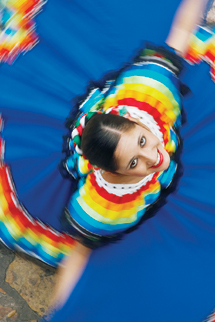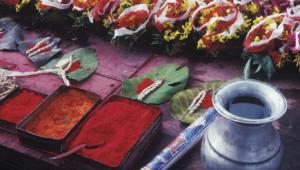Blood, Sweat, And Tear Sheets; Days In The Life Of A Traveling Photographer
If you travel and take pictures you know that photographs like the ones you
see here don't just happen. At least, not for me. It's more likely
that you'll be able to capture found moments that approximate some of
these images, but since I most often set out to fulfill an assignment of one
sort or another--stock shots for specific markets or a client's particular
needs--I can't rely on serendipity. I have to make plans and carry
them out.
Which is not what a lot of people think happens. Judging from e-mails from readers
and conversations with people I meet, I realize there's a misconception
about what I do...or, more precisely, about what it takes to do what I do.
Some people read the column and think, he travels for a living, takes pictures,
has offices worldwide, it's all so glamorous. The truth is, glamour has
nothing to do with it. I love the work, but make no mistake, it's exhausting.
So here I'd like to give you a picture of my life on the road, and I'd
like to do it by answering some of the questions I receive in e-mail and in
person.
 |
|
|
How many hours of preproduction goes into a day of shooting?
It's not hours of preproduction, it's days. For me, it's a
minimum of two days preproduction for every day of shooting. I know what you're
going to ask next: Preproduction means...? Well, it means everything: research
online and in books; phone calls and letters; talking with travel agents; arranging
for models, assistants, and translators; getting the gear ready. Now, I don't
do this by myself. I have a sizable staff, and they're experienced and
fast, but it still takes that long. (Often the places I'm most familiar
with take longer to plan for, simply because we need to find new locations and
come up with new ideas and new angles.)
Do you go out with a shot list?
You bet.
 |
Who makes it up?
I do, but it comes from what's needed to fulfill stock requirements, or
from a client's ad or promotion, or from what I think I need to satisfy
my global market reach. The shot list is the framework for everything I do,
but it doesn't have to be complicated or even very specific. It could
be a list of 20 ideas, 20 actions, 20 activities or locations. Over the years
I've tried different ways to create the shot list. I've had art
directors and staffers make the list, but that's never worked for me.
I have to be organically involved with the process of preproduction and the
shot list. Ultimately it's me, sitting at my desk, looking through books,
scouring the Internet, making calls, reviewing what I've done before and
figuring out what I need to do this time.
Where do the creative ideas come from?
From me, with a lot of input from others. Many of the ideas start with the needs
of the stock agency. They need education in Hong Kong; the modern medical world
of Shanghai; the architectural boom in Beijing. Then it's up to me to
express and depict those concepts. I could decide to be literal or symbolic.
For Beijing's building boom I could photograph heavy equipment and skyscrapers
going up, or a child playing with building blocks. And it's up to me to
know if symbolic or literal is right for a particular client or market. I have
to know my market, my client, the agency. What they will accept? What will they
like? And I'd be amiss to not give them several options. A lot of agencies
send tear sheets so I'll know that this is what they like and are looking
for. Frankly, I'm not a big fan of the tear sheet method. I haven't
built a career by studying the work of others or imitating what others have
done. To me, tear sheets are not very inspirational.
 |
















































